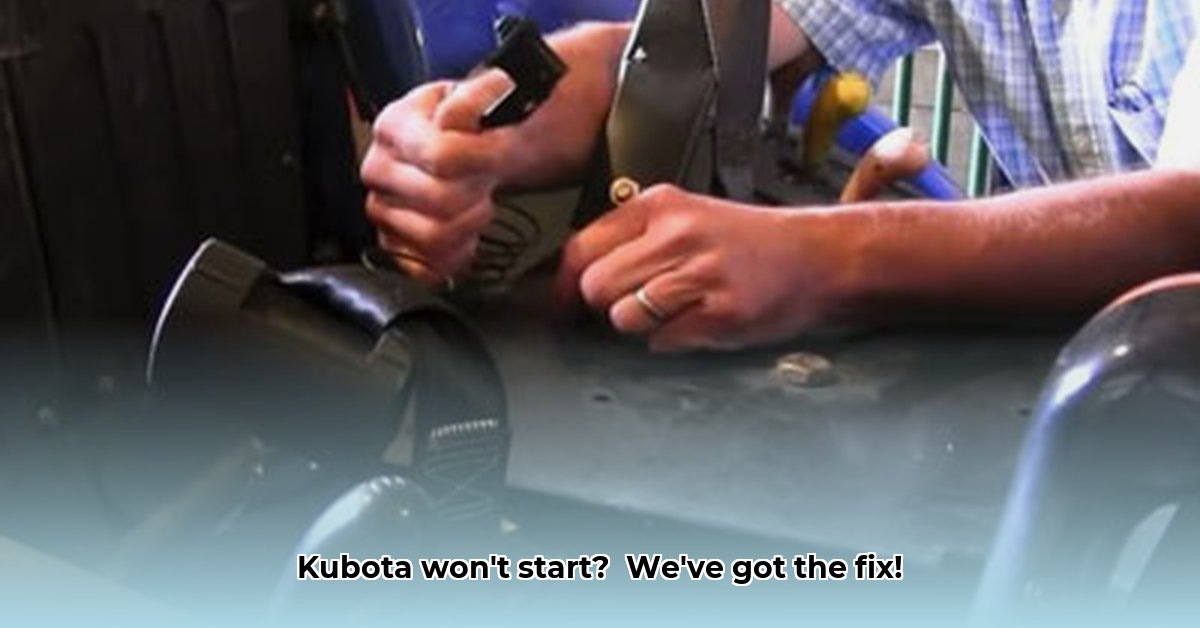
Kubota Tractor Safety Switch Troubleshooting: A Step-by-Step Guide
Is your Kubota tractor refusing to start? Before you panic and call a mechanic, understand that a common culprit is a malfunctioning safety switch. This comprehensive guide will walk you through troubleshooting and fixing these issues, empowering you to get your tractor back to work quickly and safely. For example, see more details on a 2006 model here.
Safety First: Prioritizing Your Well-being
Working on machinery requires caution. Always follow these safety precautions:
- Secure the Tractor: Use wheel chocks to prevent accidental movement. (Wheel chocks are inexpensive wedges that keep the wheels from rolling.)
- Disconnect the Battery: Disconnect the negative (-) terminal to prevent electrical shocks.
- Get Assistance: A second person can be helpful for accessing hard-to-reach areas.
Identifying and Testing Kubota Safety Switches
Kubota tractors use several safety switches to prevent accidental operation. These typically include:
- Seat Switch: Prevents starting unless the operator is seated.
- PTO (Power Take-Off) Switch: Prevents starting if the PTO is engaged. (The PTO is a power output shaft for implements like mowers.)
- Transmission Range Switch: Ensures the transmission is in neutral before starting.
- Brake Pedal Switch: Requires the brake pedal to be depressed before starting.
Step 1: Visual Inspection (The Quick Check)
Begin with a thorough visual inspection of each switch. Look for:
- Physical Damage: Cracks, breaks, or any signs of wear and tear.
- Debris: Dirt, mud, or other obstructions can interfere with operation.
- Loose Mounting: Ensure each switch is securely fastened.
Step 2: Functionality Testing (Using a Multimeter)
You'll need a multimeter (an electrical testing device) to check switch functionality. (A multimeter measures voltage, current, and resistance.)
- Refer to your Owner's Manual: Locate the wiring diagrams for your specific Kubota model.
- Test for Continuity: Set your multimeter to the continuity setting. This checks for a closed electrical circuit.
- Test Each Switch: Test each switch according to its intended operation. It should show continuity only when the correct conditions are met (e.g., seat occupied, PTO disengaged, transmission in neutral, brake depressed). Lack of continuity indicates a faulty switch.
Step 3: Wiring Inspection (Tracing the Lines)
Carefully inspect the wiring harness connected to each switch. Look for:
- Broken Wires: Frayed, cracked, or completely severed wires.
- Corrosion: Greenish or whitish deposits indicating corrosion.
- Loose Connections: Wiggle the connectors; any looseness is a potential problem.
Step 4: Addressing Specific Issues
- Faulty Switch: Replace a faulty switch with an OEM (Original Equipment Manufacturer) part from your Kubota dealer or a reputable supplier.
- Wiring Problems: Repair or replace damaged wiring. If extensive damage is found, professional assistance is recommended.
Step 5: Switch Replacement (If Necessary)
- Disconnect the Battery: This is crucial for safety.
- Access the Switch: Consult your owner's manual for specific instructions.
- Remove and Replace: Carefully remove the old switch and install the new one, ensuring secure connections.
- Reconnect the Battery: Test the tractor to verify the repair.
Step 6: When Professional Help is Needed
Don't hesitate to call a qualified mechanic if:
- You're uncomfortable working with electrical systems.
- You've tried troubleshooting but the problem persists.
- Extensive wiring damage is present.
Step 7: Preventative Maintenance
Regular inspection and cleaning of safety switches and their wiring harnesses can prevent future issues. This simple preventative maintenance can save time & money in the long run. A yearly inspection is recommended.
Key Takeaways: Mastering Kubota Tractor Safety Switch Troubleshooting
- Safety switches are critical for safe tractor operation.
- Systematic troubleshooting involves visual inspection, multimeter tests, and wiring checks.
- Replacing faulty switches is often a straightforward repair.
- Knowing when to call a professional saves time and potential damage.
- Preventative maintenance is key to avoiding future problems.
By following this guide, you have a better chance of getting your Kubota back up and running effectively and safely. Remember to always prioritize safety and consult your owner's manual for model-specific information.